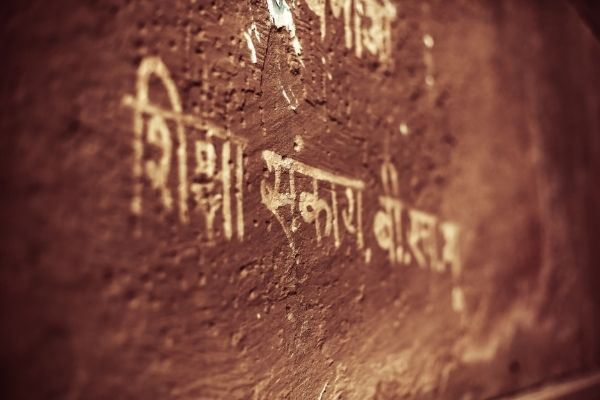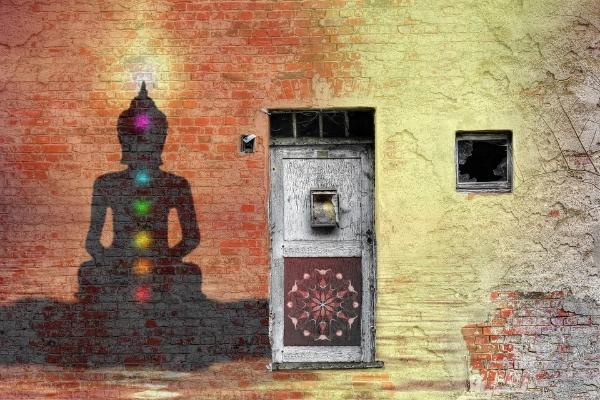Life Map
This, “life map” depicts the interconnectedness of the massive body of experience, teachings and ideas represented in Indian knowledge systems (Bhāratīya jñāna paramparā). Reflection on it can help orient us— as students or practitioners of one of these arts, sciences or wisdom traditions— to the greater context in which our subject exists.
Learning at least a little about related subjects can help us mature and enrich understanding of our chosen subject.
On the left side of this map, we see the Vedic sciences (vidyās) and arts (kalās) – examples of what we might be doing in life.
Moving from bottom left to top right, we see the four life stages (āśramas) through which we each travel–stages that may influence what we choose as our focus at different times in our lives.
On the right side of the map, we see examples of spiritual or philosophical teachers, traditions or texts that influence what we do, and how we find meaning and purpose in life.
You may click on any element for a tiny bit of (imperfect) information about it and click through that, for more information about it.
Below you will see a, “life map” –a model showing the interconnectedness of the massive body of experience, teachings and ideas connected to Indian knowledge systems. Reflection on it can help orient us— as students or practitioners of one of these arts, sciences or wisdom traditions— to the greater context in which our subject exists.
Learning at least a little about related subjects can help us mature and enrich understanding of our chosen subject.
In the right side of this, “life map” we see examples of spiritual or philosophical teachers, traditions or texts that address the subtle, existential questions we may find ourselves asking–questions like, “What inspires me?” or, “Why am I here?” The answers to these questions tend to influence how and what we do in life.
In the left side of this map, we see the Vedic sciences (vidyās) and arts (kalās) – examples of what we might be doing in life.
Moving from bottom left to top right, we see the four life stages (āśramas) through which we each travel in life–stages that may influence what inspires us, and what we do.
You may click on any element for a tiny bit of (imperfect) information about it and click through, to a page with more information about it.
For a larger map that is easier on the eyes, you will need to go to this page on a computer or tablet.
This map is not definitive; it is one of innumerable possible models of Indian knowledge systems. Many saints and seekers have depicted the the interconnectedness of these systems in various ways.
Behind this multiplicity, however, the ṛg veda describes a One—whether we call that One, “agni,” as is sometimes the case in the ṛg veda or, Brahman, as it is called in the Upaniṣads, or by any other name.
This oneness underlies a ṛta (cosmic order of truth) that connects all things and allows for innumerable valid entry points into into it from any of the various knowledge systems.
This website and Satsangam’s endeavors aim to approach that One through the various entry points. It is a work-in-progress and we expect to be for (at least) decades to come, adding information, suggested texts, resources and courses connected to each element. Welcome to the beginning.
This video class introduces the relation of the Life Map to the artwork that represents Satsangam’s vision, an explanation of the map, and a discussion of why it is important. It concludes with an introduction to Drs. Ramkumar & Welch within the context of the map, as they facilitate the Vedic Threads membership-based course, in which they explore concepts related to the elements of the life map with course participants and special guest instructors.
एक॑ ए॒वाग्निर्ब॑हु॒धा समि॑द्ध॒ एक॒: सूर्यो॒ विश्व॒मनु॒ प्रभू॑तः । एकै॒वोषाः सर्व॑मि॒दं वि भा॒त्येकं॒ वा इ॒दं वि ब॑भूव॒ सर्व॑म् ॥
एक एवाग्निर्बहुधा समिद्ध एकः सूर्यो विश्वमनु प्रभूतः । एकैवोषाः सर्वमिदं वि भात्येकं वा इदं वि बभूव सर्वम् ॥
eka evāgnir bahudhā samiddha ekaḥ sūryo viśvam anu prabhūtaḥ |
ekaivoṣāḥ sarvam idaṃ vi bhāty ekaṃ vā idaṃ vi babhūva sarvam ||
Agni is one, though kindled in various ways; one is the Sun, preeminent over all;
one Dawn illumines this all;
one is that which has become this all. Ṛgveda: 8.58.2
Indraṃ mitraṃ varuṇamaghnimāhuratho divyaḥ sa suparṇo gharutmān
ekaṃ sad viprā bahudhā vadantyaghniṃ yamaṃ mātariśvānamāhuḥ
They call him Indra, Mitra, Varuṇa, Agni, and he is heavenly nobly-winged Garutmān.
To what is One, sages give many a title—they call it Agni, Yama, Mātariśvan. Ṛgveda: 1.164.46
For a brief overview of some of the teachers, traditions, texts, sciences, or arts we find in Indian knowledge systems, click on the relevant box below. Or hone in on Ayurveda & Yoga, or explore the conceptual threads that are woven throughout the tapestries of Indian knowledge systems and life in general. These are ideas like life force, life stages, what is meaningful in life, stages of learning, and many others.
This website and endeavor is a work-in-progress. We expect to add information, suggested texts, resources, conversations and courses related to each element for (at least) decades to come. Welcome to the beginning. Sign up for our newsletter to stay posted.







